For their small size, Black-footed Cats have very large home ranges. Male ranges average 20.7 sq km, and overlap those of one to four females. Female home ranges are around 10 sq. km. Young males disperse far from their natal range, while young females settle in adjacent ranges or take over part of their mother’s territory.
There is a slight overlapping of adult male ranges, and territory boundaries are marked with intense spray marking. An adult male marks his territory on average 100-200 times a night, directing a fine mist of strong smelling urine towards vegetation or termite mounds. One male, while advertising to a neighboring female, left a record 600 markings in one night. Other marking behaviour includes cheek rubbing and loud vocalizations. This long acting signal system proves very effective, since little interaction is seen between cats. When a male and female do meet outside of the breeding season, there is a brief nose-to-nose sniff before they resume their solitary hunting.
Females only mark heavily when they want attention from males or are staking out their range boundaries, then averaging 100 sprays a night. Black-footed Cats make no attempt to hide their faeces, leaving them on termite mounds or aardwolf middens but most often depositing them on bare ground.
The call of these small cats is surprisingly loud and deep, uttered repeatedly during the breeding period. The call carries over long distances to communicate with others and find mates. Females also make a soft call to kittens.
Black-footed cats are tenacious little predators. One female in the study often took on other animals she met at night, including those much bigger than herself. Once she jumped with bared claws and fangs onto the face of a black-backed jackal – an animal eight times heavier. Other times, she barely gave an eye to fearsome spotted eagle owls that hunt from their perches on fence poles.
Black-footed Cats are nocturnal, and their activity varies with the length of the night over the season, leaving and returning to their dens within 30 minutes of sunset and sunrise. The main daylight activity is basking around their den or refuge either in the cold winter or after heavy summer downpours to soak up a bit of warmth.
Like most cat species these tiny animals are solitary, coming together only for mating. The resident male is the only one to mate with the female in her short oestrous period. Females usually produce one litter of two kittens annually. Under ideal conditions a female may successfully raise two litters in the warmer seasons of the year, but this depends on prey base, predator density, and climate. Compared to other wild cats, an average litter of two is small, resulting in a low reproductive potential.
Black-footed cats take a reproductive pause in winter. At this time the low temperatures would make it difficult for kittens to stay warm enough when the mother is away for 10-13 hours. Winter temperatures also mean lower numbers of rodents, bird chicks and insects, which are needed to meet higher food requirements while suckling the kittens.
From early on, Black-footed kittens are tough survivors.After giving birth to 60-90 gram young, a female spends just four days with her kittens before returning to her nocturnal hunting routine.
Over this four day period she spends less and less time with her kittens at night. The first day after birth she hunts for only 2 hrs. The second day she hunts for 4 hours, the third day is 6 hours, and normal behaviour returns after that with 10 hours hunting. She needs to go out and hunt to have the energy for producing milk.
She warms and nurses her young in daylight hours. The kittens are somewhat more mature at birth than domestic kittens and their development is rather fast. They are weaned at 2-3 months when the mother brings live mice back to the den. Males have no part in raising the kittens. The kittens remain in their mother’s range for some time after becoming independent.
The most common dens are abandoned springhare burrows. Other dens are under rock slabs or in old hollowed out termite mounds. This habit earned the small spotted cat its widely used Afrikaans name “miershooptier’, meaning anthill tiger.
Field Research Has Benefited the Species in Captivity
- Captive cats must be provided with a highly varied diet including fully feathered birds, as feathers contain a large amount of the essential amino acid taurine
- The proportion of fibre to protein in captive diets is often too low and can result in kidney problems.
- Blood values from wild Black-footed Cats have provided data that can indicate kidney problems in captive cats
- As wild cats eat about 15-20% of their body weight each night, captive cats require larger quantities of food than other small felids, due to their high metabolic rate
See also
Black-footed Cat Research Project
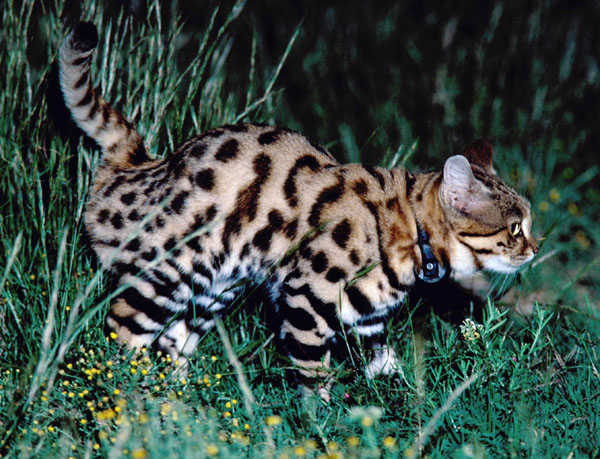
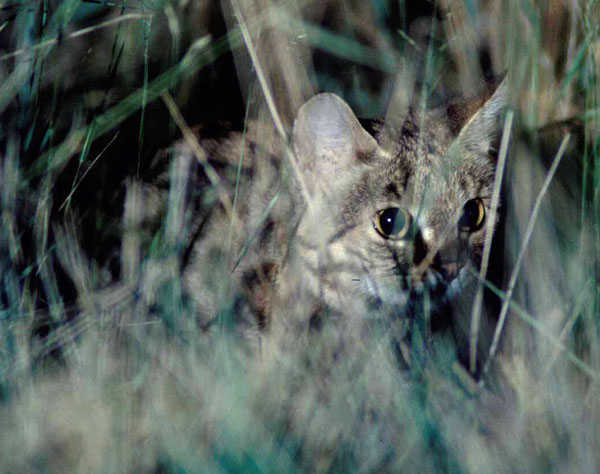
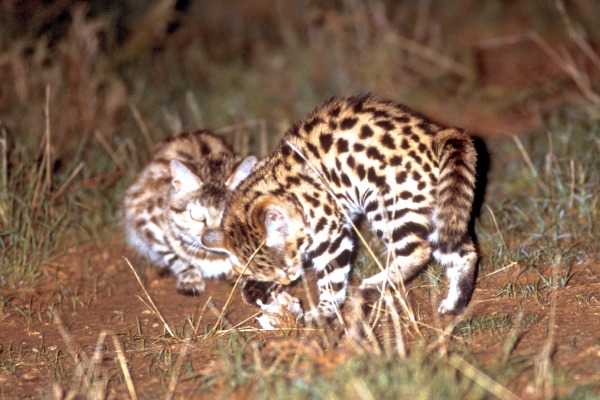
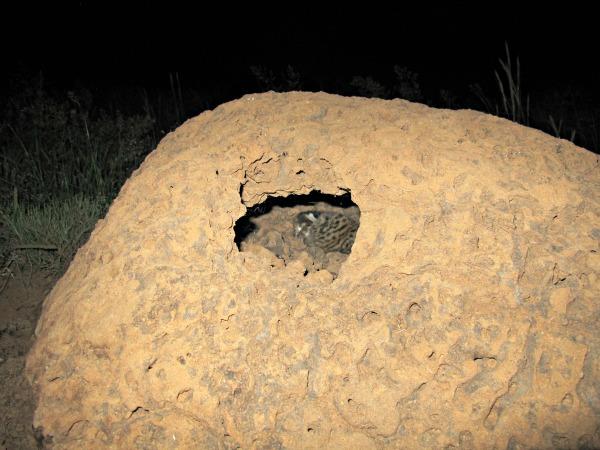
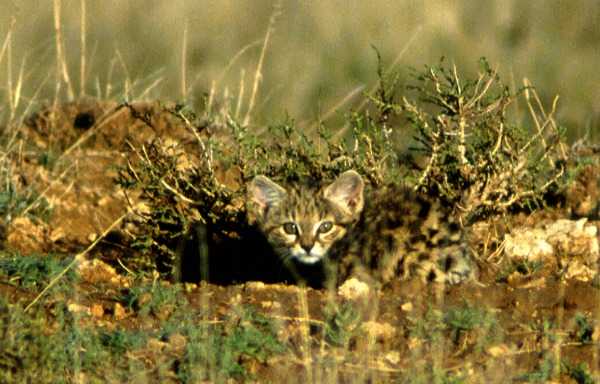

Cheryl Abbott
Please see following links – I wish these moving photos could be accompanied by education about the species and how to help, surely the photographer might be receptive
http://blog.africageographic.com/africa-geographic-blog/wildlife/big-cats-take-on-little-cat/
http://www.dailymail.co.uk/news/article-2596331/Bravest-little-cat-world-Tiny-wildcat-scratches-hisses-pride-lionesses-surround-no-match-end.html